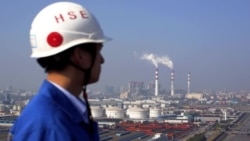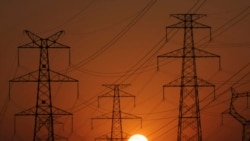World leaders, negotiators, climate experts and business leaders convene in Glasgow, Scotland, at the end of this month for the 26th United Nations Climate Change Conference of the Parties (COP26). Nations are called on to present action plans for drastically slashing greenhouse gases.
The goal is to keep global warming within a rise of 1.5 degrees Celsius (2.7 Fahrenheit) and prevent catastrophic changes to the climate and global economy. COP26 has been billed as “the world's best, last chance to get runaway climate change under control.”
On October 14, China’s Foreign Ministry spokesman, Zhao Lijian, was asked to comment about blame and pressure placed on developing economies, such as in China or India, for emissions.
Kishore Mahbubani, a public policy professor at the National University of Singapore, had written in The Strait Times that China can be called the largest greenhouse gas contributor only for recent emissions. Over history, the United States has been the biggest contributor.
Mahbubani argued that the United States and other developed countries bear a larger share of responsibility for climate change since the dawn of the Industrial Revolution centuries ago.
Zhao praised the idea.
“For example, he said that the largest emitter in cumulative terms is the U.S. [United States],” Zhao said. “[C]limate change is the result of cumulative emissions of greenhouse gases. Developed countries have unshirkable and historical responsibility, since they have been releasing greenhouse gases into the atmosphere for the past 200 years or so of industrialization.”
There is no doubt that the United States is the biggest historical emitter of greenhouse gases. But since 2004, China has had the world’s largest carbon footprint. And China now pumps out more greenhouse gases than the U.S. and all developed countries combined.
That makes Zhao’s remarks misleading. In fact, as COP26 beckons, much of the existential urgency about climate change is about what China will do. And that’s not clear. Also unknown is whether Chinese President Xi Jinping will attend the conference along with other world leaders.
Carbon dioxide and other greenhouse gas emissions from human activities have been the primary driver of global warming. In 2018, China was responsible for 28.5 percent of global carbon dioxide emissions, the biggest share. Carbon dioxide, of course, is the primary greenhouse gas.
According to a May 2021 report from the consulting firm Rhodium Group, China saw its 2019 greenhouse gas emissions – including carbon dioxide, menthane, nitrous oxide, F-gases and sulphur hexafluoride – reach about 27% of the global total. By comparison, the United States, the world’s second-largest emitter, made up 11% of the total, or less than half China’s.
“Once China's emissions peak, global peak is almost a given,” Lauri Myllyvirta, lead analyst at Center for Research on Energy and Clean Air (CREA), said on Twitter.
China’s tremendous contribution comes largely from its reliance on coal power. The country is the world’s top coal producer and accounts for half of global consumption. Between 2000 to 2018, coal accounted for about 75.5 percent of China’s carbon dioxide emissions.
China also has been under pressure as the world’s largest financier of coal-fired power plants. According to CREA, China backed 180 gigawatts of coal plants overseas from 2010 to 2020. That was 1.5 times the entire coal-power capacity in the European Union and the United Kingdom.
Beijing has in recent years made pledges to reduce emissions and fight climate change, including joining the Paris climate treaty in 2016. President Xi pledged in September 2020 to reach peak carbon dioxide emissions before 2030 and achieve net-zero carbon emissions by 2060.
Last month, Xi further made an unexpected, though vague, announcement at the U.N. General Assembly that China would end funding for foreign coal-fired power plants.
A study published in the journal Science in April found China’s pledge to reach carbon neutrality by 2060 is “largely consistent with the 1.5C warming limit” of COP26, but only if China carries out “deep” emission reductions – for carbon and non-carbon – over the next 30 years or so.
Chunping Xie, a policy fellow at the Grantham Research Institute on Climate Change, told the publication Carbon Brief that “China must immediately adopt a mitigation pathway compatible with the 1.5C goal.”
“China’s role in the world is now of a magnitude that makes its actions in the immediate future critical to how the world goes forward,” she added.
One of the goals for COP26 is to secure global commitments to net-zero emissions by mid-century, or 10 years earlier than China’s own target.
“This is only possible if emissions in China are reduced significantly,” Detlef Van Vuuren, a professor at the Copernicus Institute of Sustainable Development at Utrecht University told Carbon Brief. “Politically, China’s role is also crucial as its actions might also provide the opportunity for other countries to take steps.”
Myllyvirta remains cautious.
“Continued growth in China's CO2 emissions until late in the decade is absolutely not acceptable, and that needs to be made clear to Chinese negotiators. But China was never going to ‘cave’ and commit to an earlier peaking date in Glasgow than pledged by Xi,” he tweeted.
“It will take a lot more pressure and coaxing and leverage than offering a photo-op in Glasgow to change the mind of Chinese decision-makers.”
China's special climate envoy, Xie Zhenghua, has confirmed to attend the COP26 in Glasglow, state-run CGTN reported Tuesday. Xie told reporters that COP26 was deeply significant and that China was working for the success of the conference.
Though Xie expressed China’s willingness to work with the international community on climate change and said it would do its best to achieve carbon neutrality by 2060, China has not updated its pledges under the 2016 Paris agreement ahead of COP26.









